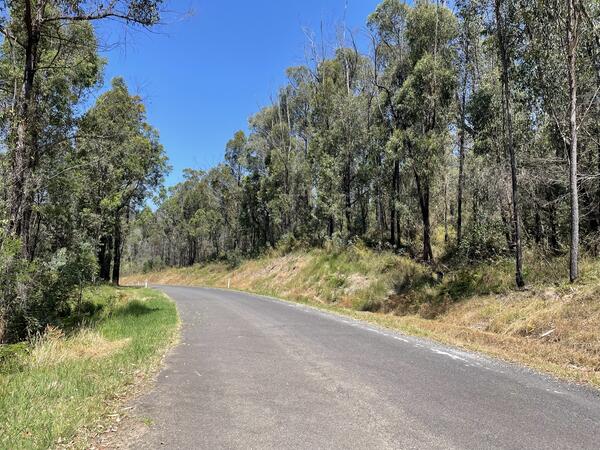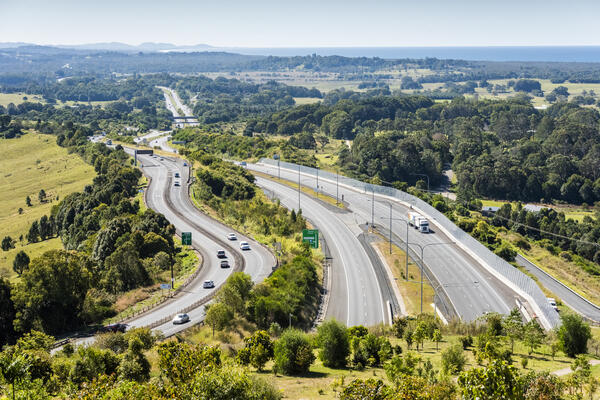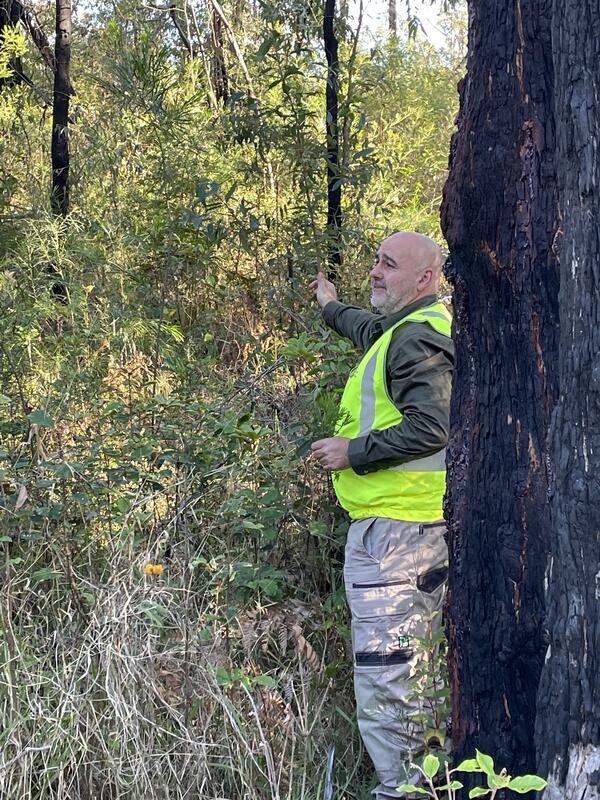Regional and Outer Metropolitan – Network Resilience Program
Project overview
Latest News
June 2025 – Work starting on Chifley Road as part of Bushfire Corridor Resilience Project
Transport will carry out vegetation removal and trimming along Chifley Road from Tuesday 10 June. For more information read the media release or notification letter (PDF, 430.54 KB).
October 2024 – Work starting on the Oxley Highway as part of Bushfire Corridor Resilience Project
Transport will carry out vegetation removal and trimming along the Oxley Highway between Coonabarabran and Mullaley from Monday 28 October. For more information read the media release or notification letter (PDF, 331.08 KB).
June 2024 - Work starts on Great Western Highway as part of Bushfire Corridor Resilience Project
Transport will carry out vegetation removal and trimming along Great Western Highway between Lithgow and Bathurst, decreasing the future risk of the road being closed during bushfires. For more information read the media release or notification letter (PDF, 331.74 KB).
April 2024 – Work starts on Goolma Road as part of Bushfire Corridor Resilience Project
Almost 100 dead and decaying trees in the Goolma Road corridor will be removed or trimmed to boost bushfire resilience. For more information read the media release or notification letter (PDF, 343.49 KB).
Program information
Background
A resilient transport network is one where we have the capacity to bounce back and perform in the event of natural hazards and disasters. Having this resilience in our transport network and systems, ensures our customers, our users and our communities remain safe, connected, and supported.
Transport for NSW acknowledges in its Future Strategy 2056 that with increasing climate change, natural disasters will continue to disrupt transport systems. Disruptions from natural disasters on our transport systems affect our customers, our communities, our amenity, and the economy.
Like other key agencies, Transport for NSW has a strong focus on developing its understanding of natural disasters on our transport systems, and the future. The Regional and Outer Metropolitan – Network Resilience Program is one such example of this focus.
Network Resilience Program
In the Network Resilience Program, a resilient transport system or transport network is one where we have the capacity to bounce back and perform in the event of natural hazards and disasters. This resilience in our transport network and systems, ensures our customers, our users and our communities remain connected, supported and safe. In this work we are seeking to understand the vulnerability and potential impact of future natural disasters, so that Transport for NSW may invest or further enhance its preparedness into the future.
Transport for NSW is working now to know the risks to the transport network and having a plan for what to do to manage those risks.
Preparedness is defined as activities undertaken in advance of the occurrence of an incident to decrease the impact, extent, and severity of the incident and to ensure more effective response activities. Preparedness refers to the strategic solutions which can be made at the policy and management level to assist with developing the resilience of road infrastructure against natural disasters.
There are currently three projects within the Regional and Outer Metropolitan – Network Resilience Program.
Program Streams
Bushfire Corridor Resilience
The Bushfire Corridor Resilience Project is an investment of $19.5 million in focused and prioritised areas on the State Road network to build resilience to bushfire. Transport for NSW acknowledges the work of the Australian Road Research Board (ARRB) to developing the Framework to Incorporate Bushfire Resilience into Road Infrastructure.
- Create clear zones and vegetation-free zones. Road safety barriers have become a common treatment to preventing fatal and serious injury and run-off-road crashes. These barriers may be located 4–6 m away from a traffic lane to allow for a vehicle to stop alongside the barrier, which can also create an offset area between the traffic lanes and adjacent foliage. These offset areas can serve as a firebreak and provide an opportunity for fire agencies to limit the spread of large fires.
- Vegetation-free zones along roadsides.
- Installing non-flammable and non-combustible materials such as concrete and metal instead of timber, plastic or rubber for ancillary structures such as guideposts.
- Appropriate tree management to separate the tree crowns, especially where trees are located close together across or close to a State Road. Under-pruning of these trees can also allow for increased canopy separation from ground vegetation. Tree management also includes the removal of tree branches overhanging or close to a State Road. This may also include the removal of dead trees.
Any treatments under this Bushfire Corridor Resilience Project have been thoroughly assessed and compliance with all appropriate laws and environmental requirements has been sought.
Customer Journey Resilience Plans
Transport for NSW is working with Local Government to develop Customer Journey Resilience Plans for each of the nine planning regions across regional NSW. These Plans will be developed from the perspective that resilience can be built into customer journeys if we (with input from the community and stakeholders) identify critical customer routes and vulnerability on the transport network to natural disasters.
By engaging with network users and customers (including Aboriginal communities and vulnerable communities), local government, emergency services, and other stakeholders we will build a detailed understanding of the transport network and the impact of natural disasters.
From there we can identify alternative routes, infrastructure and services that will build resilience on the most vulnerable parts of the network.
Aboriginal Cultural Land Management
The third project under this program of work is an investment of $4.5 million to determine how Transport for NSW can collaborate and support Aboriginal people and communities in their cultural and economic aspirations for Country while providing resilience to natural hazards on and around critical transport routes.
We acknowledge that Aboriginal land management aims to protect, heal, enhance healthy and ecologically diverse ecosystems, and cultural values. Outcomes can be social, cultural, spiritual, and economic. It also provides opportunities to embrace non-traditional types of community development, where kinship systems and Indigenous ways can impact the way people live and work.
Transport for NSW is committed to supporting and pursuing a greater application of Aboriginal land management, including cultural burning around our assets, infrastructure, and services.
Cultural burning is a process that includes frequent low intensity fire treatments aligning with cultural practice and values assessment.
The Network Resilience Program is tasked with developing a framework of structures guided by caring for country principles to support the integration of traditional and cultural practice as a tool for mitigating future impacts of bushfires on the State network.
A funding program and guideline has been established to administer this in the identified pilot locations. Transport for NSW acknowledges that this is a pilot program and, if successful, a broader program may be established.
Community information
Aboriginal Cultural Land Management Program Document
Aboriginal Cultural Land Management Guideline
Community notifications
Community updates
- June 2024 notification letter (PDF, 430.54 KB)
Vegetation removal on Chifley Road between Lithgow and Bell from Tuesday 10 June - October 2024 notification letter (PDF, 331.08 KB)
Work starting on Monday 28 October to boost bushfire resilience and driver safety on the Oxley Highway. - June 2024 notification letter (PDF, 331.74 KB)
Work starts to boost bushfire resilience and driver safety on Great Western Highway. - April 2024 notification letter (PDF, 343.49 KB)
Work starts to boost bushfire resilience and driver safety on Goolma Road.
Media releases
- 17 October 2024
Vital vegetation work to boost bushfire readiness on Oxley Highway. - 11 June 2024
Boosting bushfire resilience on The Great Western Highway. - 3 April 2024
Boosting bushfire resilience and driver safety on Goolma Road in the state’s west.
Projects
As new projects are developed, we will include details here.
Contact us
Media enquiries
For all media enquiries please email: media@transport.nsw.gov.au




